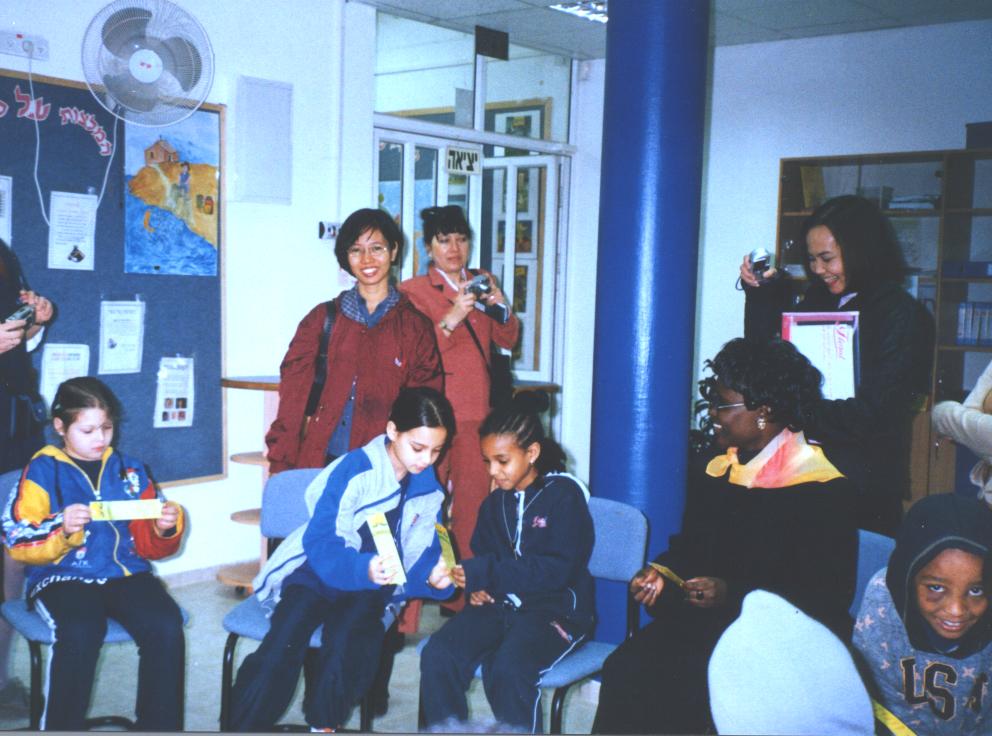|

Teaching Hebrew
as a Second Language to the Israeli Immigrants
I had a marvelous time visiting an Ulpan, a transition class where immigrant children learn how to speak and write the
Hebrew language as a second langauge in a low-income area of Acco on March 11, 2004. I found out that a teacher is assigned
to teach the Hebrew language to children from Russia, Ethiopia and even Lebanon.
Julia, the Hebrew language teacher in this school, had individual and group session with the children. These children
attended the regular class in the school like the rest of the class who has Hebrew as a native language but they also spent
part of their time in school, learning the Hebrew language.
Hebrew is taught to immigrants children in an ulpan.
No matter what the age of the children they undergo the same level and activities as the younger children. What matter is
the time of exposure to the Hebrew language, so if an immigrant child came to Israel while in the third grade s/he will receive the same lesson
as a child in the first grade who came to school at the same time.
However, the rate that a child goes through the lesson is a case to case basis. A child for instance, can finish studying
Hebrew for six months though some of the children take 2 years to learn the language. A child can be pull out of his/her current
level in an ulpan and transferred in the next level anytime, depending on the results of the evaluation that the teacher of
the ulpan conducted to determine the childrens ability in learning the language.
|
